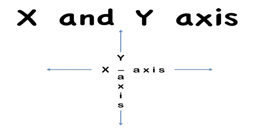Teachers often focus on building vocabulary and background knowledge for English learners. This is important but there are also other things to consider. According to David and Yvonne Freeman, when readers gain information and understanding from text, they use three cueing systems. Those three cueing systems are graphophonics, semantics, and syntax. Graphophonics is the subconscious knowledge of phonology(sounds) and orthography(spelling). Semantics is the meaning of words and syntax is the order of words in a sentence.
One of the first things teachers do to help English learners is to teach them the English alphabet and the sounds associated with the letters. Teachers can provide lots of opportunities for students to practice learning these sounds and words as they provide meaningful lessons. Teachers use lots of strategies to help students visualize and conceptualize the meaning of the lesson. Stephen Krashen refers to this concept as comprehensible input. He emphasizes that students will learn when they understand the messages.
Teachers also explicitly teach English learners about context clues. These are hints about the meanings of words that come from definitions, restatements, examples, or descriptions. These are semantic cues. English learners are constantly learning vocabulary and helping them with context clues is valuable.
For syntactic cues, “readers use acquired knowledge of syntactic patterns to predict the morphological categories of upcoming words”(Freeman, 242). The syntax provides a structural frame that certain categories of words would fit. Both the order of words, or syntactic pattern, and the inflectional endings, morphology, provide important clues. Most native English speakers have this subconscious knowledge because they have grown up surrounded by English. This is an important skill to help English learners develop.
Teachers can help students learn these different patterns by using cloze activities in which they give students a passage with some of the words missing. Teachers could delete different types of words to help students focus on different aspects of syntax. They could remove all of the adjectives before the nouns, or all of the conjunctions for example.
Another way to help students learn about syntax is to help them develop their own theory, or rules about word order in a language. Teachers could prepare a list of words and ask students to observe and evaluate the words. Students could categorize words and then group the words that seem to go together. Then students could find connections among the words to create sentences and come up with a rule, or theory to support that.
One example could be the question rule. The teacher could provide lots of questions from statements. The students would then look at the patterns and come up with their rule.
Students can learn from reading.
Can students learn from reading?
In this example, the rule might be to move the second word in a statement to the first word in order to change a sentence into a question.
The Freemans stress how important it is to help students learn about syntax as well as semantics and graphophonics. “Teachers who understand syntax can design lessons to help students acquire academic language”(Freeman, 246). There are five syntactic challenges for English learners when they read academic texts. These include passive voice, comparatives and logical connectors, modal auxiliaries, verb phrases containing prepositional phrases, and relative clauses.
The passive voice is when the subject is being acted on and not performing the action. This is usually found in academic texts because the person doing the action is not usually the focus of the sentence.
Comparatives and logical connectors are often found in academic sentences. They include more/fewer and than, then and not only, and but also. These words and patterns are demanding because they require readers to make connections and remember the first part of the sentence and how it relates to the second part.
Modal auxiliaries are words that give shades of meaning such as permission, obligation, necessity, and possibility. Some of these modals include could, should, would, and might. An example sentences would be, “The liquid could have been substituted for the gas”(Freeman, p. 247) These modals are difficult for English learners because the differences in meaning may not be clear.
Prepositional phrases following verbs create more complex sentence structures. This is difficult for English learners because they need to comprehend all of the information in one sentence. An example would be, “Rainwater seeps into the ground after a storm”(Freeman, p. 247).
Relative clauses are also difficult for English learners because these make sentences more complex and readers need to understand several related ideas in one sentence. A relative clause contains a subject and verb and begins with a relative pronoun (who, whom, whose, that, or which) or a relative adverb(when, where, or why) and it usually functions as an adjective answering what kind, how many, or which one.
English learners need this type of academic language broken down and syntax should be explicitly taught. Teachers can do this by providing graphic organizers, doing hands-on activities, and collaborative projects. These types of activities will help make the meaning of the text comprehensible.
Bibliography
Freeman, D. and Freeman, Y. (2004). Essential linguistics: What you need to know to teach reading, esl,s pelling, phonics, grammar. Heinemann: Portsmouth, NH.
 Teachers can have the vocabulary posted on their walls, in a pocket chart, or available electronically through a power point or other source. Teachers can also use sentence frames to support the English learner’s language development. If the teacher provides the basic sentence pattern and words, the student can focus on one or two new vocabulary words. For example, If I see a + (plus) sign, I know I need to ________. (add) These sentences can be displayed throughout the classroom, or brought out to help with specific lessons. The important aspect is to actually use the visuals and continually refer to them throughout the lessons.
Teachers can have the vocabulary posted on their walls, in a pocket chart, or available electronically through a power point or other source. Teachers can also use sentence frames to support the English learner’s language development. If the teacher provides the basic sentence pattern and words, the student can focus on one or two new vocabulary words. For example, If I see a + (plus) sign, I know I need to ________. (add) These sentences can be displayed throughout the classroom, or brought out to help with specific lessons. The important aspect is to actually use the visuals and continually refer to them throughout the lessons.
